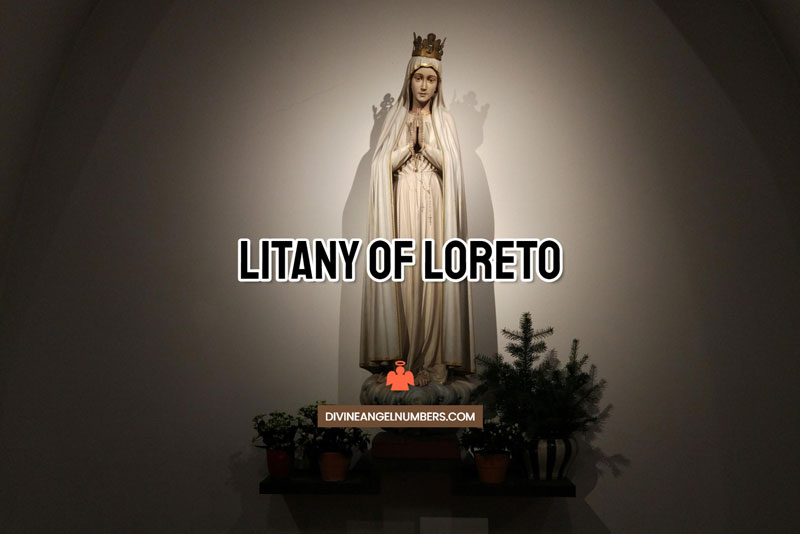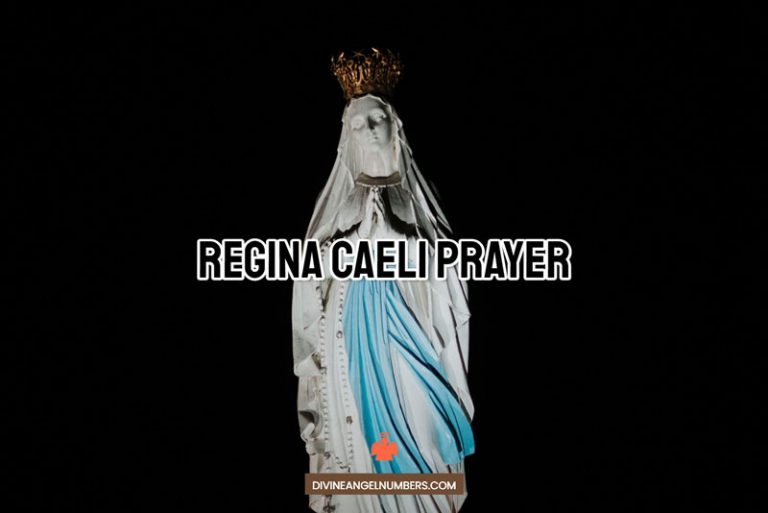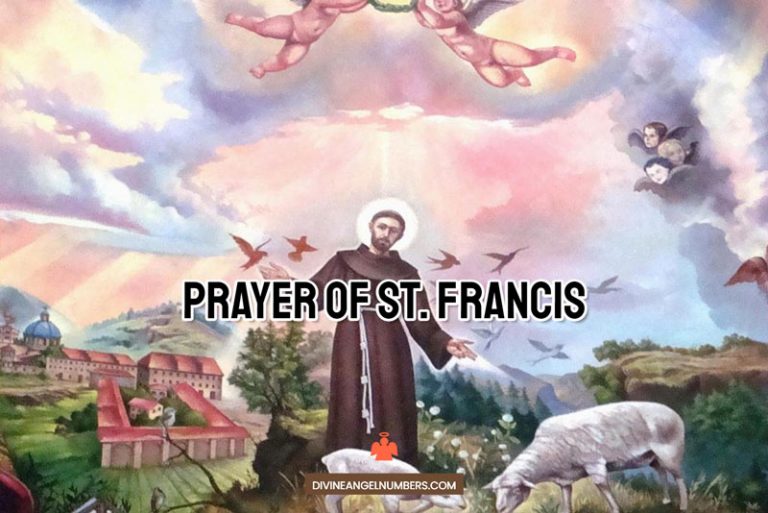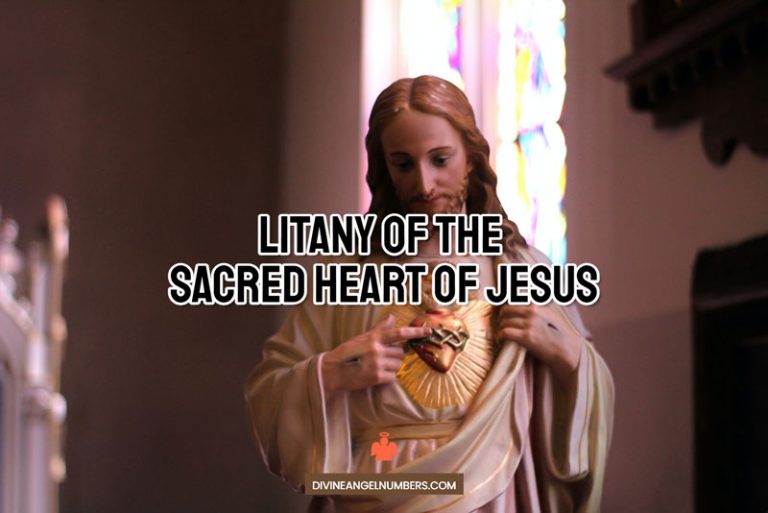The Litany of the Blessed Virgin Mary, also known as the Litany of Loreto, is a popular prayer to atone for sins and to prevent calamities. The Litany of Loreto is named after the Marian shrine of Loreto in Italy, where it is believed to have been used by pilgrims as far back as 1531.
It was officially approved in 1587 by Pope Sixtus V and is the only approved Marian litany. However, many other Marian litanies are still prayed privately.
Its tiles and invocations to our Blessed Mother include titles given to her by the early Church Fathers in the first few centuries of Christianity about her holiness in life, her power, and extolling her virtues. The Litany of the Blessed Virgin Mary has also been set to music by such legendary composers as Mozart, Palestrina, and Charpentier.

Litany of Loreto
Lord, have mercy on us. Christ have mercy on us.
Lord, have mercy on us. Christ hear us.
Christ, graciously hear us.
God the Father of Heaven, Have mercy on us.
God the Son, Redeemer of the world, Have mercy on us.
God the Holy Spirit, Have mercy on us.
Holy Trinity, One God, Have mercy on us.
Holy Mary, pray for us.
Holy Mother of God, pray for us.
Holy Virgin of virgins, pray for us.
Mother of Christ, pray for us.
Mother of divine grace, pray for us.
Mother most pure, pray for us.
Mother most chaste, pray for us.
Mother inviolate, pray for us.
Mother undefiled, pray for us.
Mother most amiable, pray for us.
Mother most admirable, pray for us.
Mother of good counsel, pray for us.
Mother of our Creator, pray for us.
Mother of our Savior, pray for us.
Mother of the Church, pray for us.
Virgin most prudent, pray for us.
Virgin most venerable, pray for us.
Virgin most renowned, pray for us.
Virgin most powerful, pray for us.
Virgin most merciful, pray for us.
Virgin most faithful, pray for us.
Mirror of justice, pray for us.
Seat of wisdom, pray for us.
Cause of our joy, pray for us.
Spiritual vessel, pray for us.
Vessel of honor, pray for us.
Singular vessel of devotion, pray for us.
Mystical rose, pray for us.
Tower of David, pray for us.
Tower of ivory, pray for us.
House of gold, pray for us.
Ark of the covenant, pray for us.
Gate of Heaven, pray for us.
Morning star, pray for us.
Health of the sick, pray for us.
Refuge of sinners, pray for us.
Comforter of the afflicted, pray for us.
Help of Christians, pray for us.
Queen of angels, pray for us.
Queen of patriarchs, pray for us.
Queen of prophets, pray for us.
Queen of apostles, pray for us.
Queen of martyrs, pray for us.
Queen of confessors, pray for us.
Queen of virgins, pray for us.
Queen of all saints, pray for us.
Queen conceived without Original Sin, pray for us.
Queen assumed into Heaven, pray for us.
Queen of the most holy Rosary, pray for us.
Queen of peace, pray for us.
Lamb of God, Who takest away the sins of the world, Spare us, O Lord.
Lamb of God, Who takest away the sins of the world, Graciously hear us, O Lord.
Lamb of God, Who takest away the sins of the world, Have mercy on us.
Pray for us, O holy Mother of God, That we may be made worthy of the promises of Christ.
Let us Pray
Grant, we beseech Thee, O Lord God, that we Thy
servants may enjoy perpetual health of mind and
body, and by the glorious intercession of the Blessed
Mary, ever Virgin, be delivered from present sorrow
and enjoy everlasting happiness. Through Christ Our
Lord. Amen
Read more: Litany of the Blessed Mary
History
The Litany of the Blessed Virgin Mary is a Marian Litany that was approved by Pope Sixtus V in 1587. The Litany of the Blessed Virgin Mary is also known as the Litany of Loreto named after the litany’s place of origin, the Shrine of Our Lady of Loreto in Italy.
The Litany which is dedicated as a prayer to the Blessed Virgin consists of passages of invocations of Our Lady. The invocations are divided into two parts: praise and supplication. While there is little documentary evidence about the origin, development, and growth of the litany, it is however known that the litany was approved by the Catholic Church in 1587.
How to pray Litany of Loreto
The Litany of Loreto begins with Kyrie Eleison (Christ have mercy ), and then invocations of the persons of the Holy Trinity (The Son, The Holy Spirit, Father of Heaven).
The Blessed Virgin is addressed as Mary, Mother of God, Virgin, and Queen along with many other titles expounding her qualities and powers such as chastity, purity, creator, savior, merciful and faithful.
The litany also delves into her power of intercession.
Read more: Act of Spiritual Communion
What is a Litany?
Commonly used in services and processions in both Christian and Judaic worship, Litanies are a form of prayer that consists of a number of petitions. The word litany derives its meaning from the Latin word ‘litania’ which means supplication. The Catholic Church has approved six litanies for public recitation. These are:
1) The Litany of the Holy Name of Jesus
2) The Litany of the Sacred Heart of Jesus
3) The Litany of the Most Precious Blood of Jesus
4) The Litany of the Blessed Virgin Mary (aka the Litany of Loreto)
5) The Litany of Saint Joseph
6) The Litany of the Saints
Other litanies such as the Litany of the Blessed Sacrament and the Litany of the Passion are approved by the Church for merely private devotion. The Lutheran Church has retained a large library of historic litanies through the ages. When the Lutherans faced religious persecution at the hands of the Turkish army in the 16th century, Luther urged his pastors to use litanies during Sunday mass.
In Eastern Orthodox Christianity and Byzantine Catholicism, litanies are known as ‘ektenia.’ Ektenias are recited during a number of Byzantine church services such as Vespers, Matins, the Divine Liturgy, and other holy services. The deacon or the priest is in charge of chanting the petitions.
On the other hand, in Judaic worship, although litanies are not very common, they do appear in some prayers. For instance, “Our Father, Our King” is a popular litany that is recited during the liturgies of Rosh Hashanah and Yom Kippur.
What is a Marian Litany?
Used in church services and processions, Marian Litanies are a form of prayer to the Blessed Virgin Mary in Christian Worship. Marian Litanies consist of a number of petitions and cover a multitude of themes including those of moral and patriotic character.
In Western Christianity, the Litany of Loreto and the Litany for the Coronation of Images of the Blessed Virgin Mary are the only approved Marian Litanies.
Structure
The composition of Litany of Loreto is structured in six parts:
1) Mary’s Holiness
This consists of three introductory advocations which highlight Mary’s sanctity as a person, her role as the mother of Jesus Christ, and her vocation as a virgin.
2) Mary, the Mother
The purpose of this series of advocation is to highlight the various facets of Mary’s role as Jesus Christ’s mother. The twelve advocations included in this part refer to her maternal activities.
3) Mary, the Virgin
The advocations included in this part include six titles that focus on the merit of her virginity and the efficacy of her virginity. Some of the titles included in this passage are; Virgin Most Prudent, Virgin Most Faithful, and Virgin Most Merciful.
4) Symbols of Mary
Symbols of Mary consist of thirteen symbolic advocations, taken mostly from the Old Testament, that highlight her virtue and her role in salvation history. Some of these titles include; Gate of Heaven, Morning Star, Vessel of Honour, and Spiritual Vessel among many others.
5) Mary, the Helper
The group of four advocations that follow in this portion explains Mary’s role as an advocate for spiritual and corporal works of mercy. Mary is referred to as the ‘Comforter of the Afflicted,’ ‘Refuge of Sinners,’ ‘Health of the sick,’ and ‘Help of Christians.’
6) Mary, the Queen
This is the last part of Marian advocations in Litany of Loreto and consists of thirteen titles that refer to Mary as Queen. Some of these also emphasize her personal holiness, queenship, and distinction. Queen of Peace, Queen Conceived Without Original Sin, Queen of all Saints, Queen of Patriarchs, and Queen of Martyrs are some of the titles bestowed upon the Blessed Virgin Mary.
Hidden Meanings Behind the Many Names of the Virgin Mary in the Litany of Loreto
After the Litany of Loreto was approved by Pope Sixtus V in 1587, the litany has been enriched several times with new invocations in the last couple of centuries. For instance, in 1883, Pope Leo XIII added Queen Conceived without Original Sin.
In 1980 the invocation ‘Mother of the Church’ was added by the Congregation for Sacraments and Divine Worship. In the present version of the Litany of Loreto, there are 13 different ways in which Virgin Mary is referred to. These titles have a profound Biblical and symbolic meaning attached to them. These 13 titles along with their explanations are as follows
1) Mirror of Justice
Virgin Mary is referred to as the ‘Mirror of Justice’ because she mirrors the holiness of God and also because she is the mirror of sanctity, supernatural goodness, and holiness.
2) The Seat of Wisdom
Virgin Mary is referred to as the ‘Seat of Wisdom’ because she is the moth of Jesus Christ, wisdom incarnate. It is also believed that she possessed the wisdom of the highest degree.
3) Cause of Our Joy
Since Mary gives birth to Jesus Christ, the Source of all joy, therefore, Mary herself is the cause of our joy.
4) Spiritual Vessel
Mary received the title of ‘Spiritual Vessel’ because not only was she the dwelling place of Jesus Christ in the Incarnation but also because she is the perfect vessel of the Holy Spirit.
5) Vessel of Honour
The title of ‘Vessel of Honour’ was conferred upon Virgin Mary because she conceived and gave birth to Jesus Christ.
6) Singular Vessel of Devotion
Virgin Mary is called the Singular Vessel of Devotion because she dedicated her entire life to the service of her divine son, Jesus Christ.
7) Mystical Rose
Mary is considered the ‘Queen of all Saints’ and since the rose is regarded as the queen of all flowers people have given her the title of Mystical Rose.
8) Tower of David
The term ‘tower of David’ is used to describe Mary’s physical as well as inner beauty.
9) Tower of Ivory
The Tower of Ivory is used to describe Mary’s pure body and soul. She is beloved by God and is protected from the poison of Satan.
10) House of Gold
Since Mary’s womb was the body in which God gestated for 9 months, therefore, she is considered the House of Gold. This title also depicts Mary’s privilege of divine motherhood and her personal perfection.
11) Ark of the Covenant
Mary is considered the Ark of the Covenant, a symbol of God’s presence and where the commandments of the Law are placed because she bore the human incarnation of God in her womb and presented Him to mankind.
12) Gate of Heaven
Mary is regarded as the Gate of Heaven because it was through her that Jesus Christ passed from heaven to earth.
13) Morning Star
We all know that the morning star which precedes the sun announces the dawn of day. Similarly, the Virgin Mary preceded Jesus Christ and announced the day of salvation.
The Litany of the Blessed Virgin Mary or the Litany of Loreto is a popular Marian Litany that represents a compilation of titles in praise of the Virgin Mary. The titles in question are associated with prophesies and symbolism from the Old Testament. These titles are primarily centered around her sanctity, maternity, holiness, and grace.



